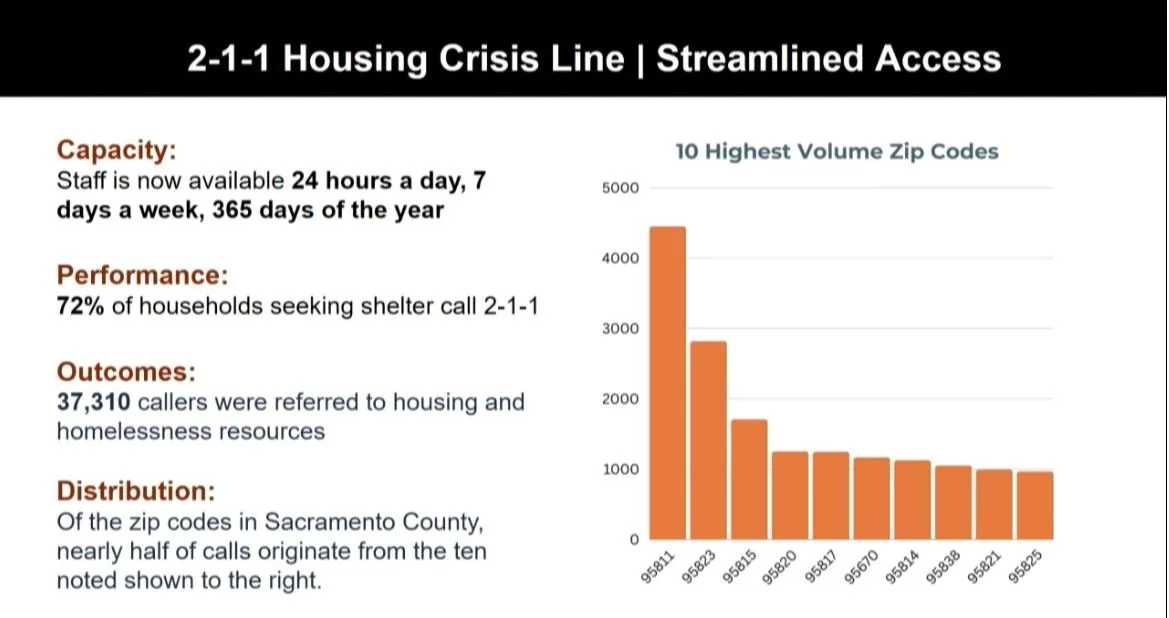Thousands helped into shelter and housing through Sacramento's Coordinated Access entry system
Sacramento (May 28, 2024) In its first full year of operation, the city and county’s joint Coordinated Access system — a one-stop access point for people experiencing or at risk of homelessness — connected 37,310 people to potential housing and services. More than 2,100 households were moved from crisis resources to housing.
Staff members of Sacramento Steps Forward Tuesday provided an update on the Coordinated Access System (CAS) to the City Council. The system was launched in December 2022 as a collaborative effort between Sacramento Steps Forward, 2-1-1, The City of Sacramento, and Sacramento County. It is designed to provide a centralized point access point to shelter, housing and other assistance for people experiencing homelessness.
As administrator of the system, non-profit homeless services coordinator Sacramento Steps Forward has prioritized stemming the flow of people becoming unhoused. The staff works with callers to the crisis line to help them find housing or avoid eviction, offering assistance such as security deposits, first-month rent, and debt resolution.
Of the 37,310 people who called the 211 access line during 2023, 98 percent were unhoused or expected to lose their housing within 30 days.
In addition to serving as an access point to emergency shelters, Coordinated Access is a portal into permanent housing placement. Five hundred sixty-five housing units were added to the system in 2023. The system now includes 996 emergency shelter beds with another 581 planned.
People who call 211 are evaluated and given priority for shelter based on their vulnerability. For those deemed eligible, the median wait time from assessment to shelter placement is now 10 days. The city and county each maintain beds outside the system for immediate placements.
The City of Sacramento is contributing $1 million over three years to help fund the Coordinated Access system, part of an increasingly integrated service and housing landscape that has seen major investments by both the city and county. The city now operates more than 1,300 emergency shelter beds a night, up from less than 100 seven years ago. Construction of affordable and permanent supportive housing has also scaled up dramatically with the help of state and federal funding.
“We are seeing so much success; we are seeing a lot of people get into housing,” said Vice Mayor Caity Maple. “What we’re doing is working, and it’s all about how we scale these things up.”





